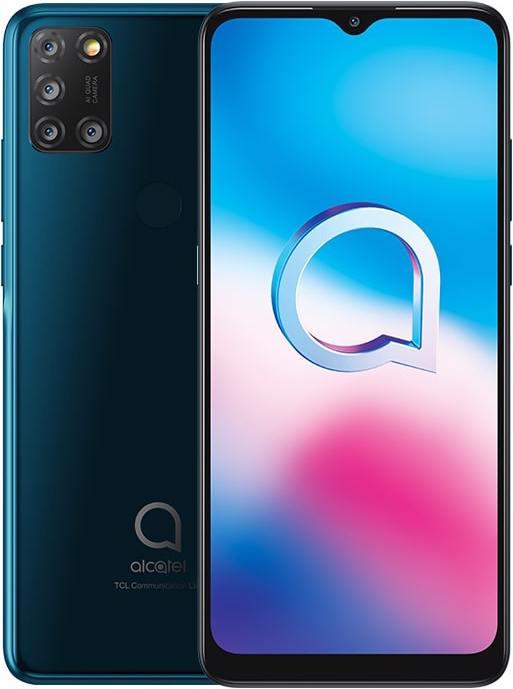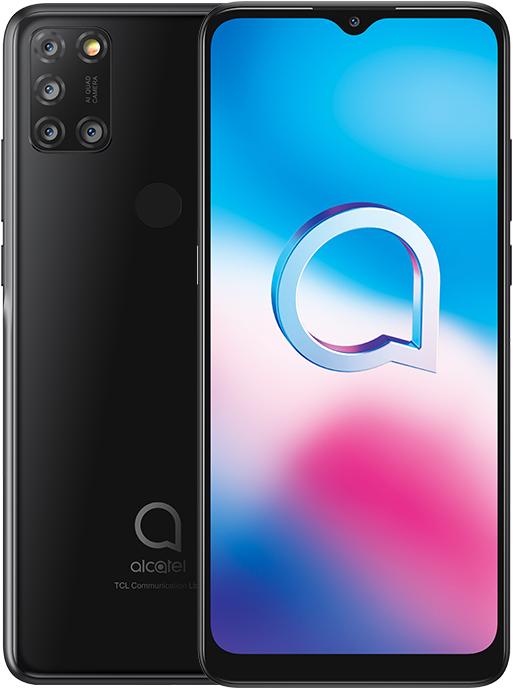

Xiaomi Redmi 9 vs. Alcatel 3x (2020): Two affordable smartphones tested
The Xiaomi Redmi 9 and the Alcatel 3x are two affordable smartphones. It is more important to look at the differences between them than with the top models. However, it is not at all easy to choose a winner in the duel.
They don't cost a lot of money, but it's worth taking a closer look at low-cost smartphones. I think the differences between them are much more relevant than with the top models. An analogy with cars: if one of two inexpensive cars can do 50 km/h and the other 100 km/h, this is more relevant for everyday life than if one of two expensive sports cars can do 250 km/h and the other 350 km/h.
Display: same size, different resolution
6.53 inches on the Redmi 9 and 6.52 inches on the 3x - the difference in size is minimal and both have the cut-out for the front camera, the so-called notch, in the centre. The Xiaomi is ahead in terms of resolution: 2340×1080 pixels beat the 1600×720 pixels on the Alcatel. The difference is so big that you can see it with the naked eye. Thanks to the higher resolution of the Redmi 9, more content fits on the screen. In other words, you can see more of a website, for example.

I can't tell the difference in brightness with the naked eye. The Redmi 9 is supposed to have a brightness of 400 nits, I couldn't find any data for the Alcatel 3x, but it's apparently in the same range. However, it is not particularly bright and it is difficult to recognise the display content in direct sunlight.
Memory and performance
The Redmi 9 is well equipped with 64 gigabytes of internal memory, but the Alcatel 3x has twice as much memory at 128 gigabytes. You can insert a microSD card in both smartphones to expand the storage space.
With the Helio G80 and the Helio P22 from Mediatek, the chipsets in the smartphones have different names, but are still very similar, with small but subtle differences: Both have eight computing cores, but the Helio P22 has four each clocked at 2.3 and 1.65 gigahertz. The Helio G80 has two with 2 gigahertz and six with 1.8 gigahertz. There are also two different integrated graphics chips, the Mali-G52 MC2 and the PowerVR GE8320
The Alcatel 3x features the Helio P22 and the PowerVR GPU as well as six gigabytes of RAM. The Redmi 9 can only offer four gigabytes. But when using the two smartphones, the Redmi 9 feels faster. The loading times seem shorter and the user interface appears more fluid. I still want to check my subjective first impressions. I therefore send the two low-cost smartphones to Geekbench 5, an app that lets the smartphones perform various tasks with one or more computing cores and awards points based on how well the hardware performs. After the smartphones had to push themselves to the limit, one winner was chosen: the Redmi 9 scored 364 and 1336 points in single and multi-core mode. The Alcatel 3x only managed 146 and 895 points.

Two cameras = eight lenses
Quad cameras are not only found in expensive smartphones. They are also sometimes installed in inexpensive devices. But they are not automatically good. The Xiaomi Redmi 9 and the Alcatel 3x are proof of this. In addition to the main camera, you can expect a wide-angle camera and two low-resolution lenses. This is not a bad thing for the lens that provides additional information for the depth of field in portrait shots. The macro lens, on the other hand, is practically unusable. Its image quality is too poor.

The main camera of the Alcatel 3x shows more details with its 16 megapixels. However, I like the colour reproduction of the Redmi 9's 13-megapixel camera better. The colours are the same in wide-angle shots - unfortunately in the direction of the 3x. However, there is a slight shift in the level of detail. The Redmi 9 is better here. The difference between 13 and 5 megapixels in the wide-angle camera is noticeable.




When taking portraits, I find the level of detail and depth of field, including the crop edges, to be equally good on both smartphones. In terms of colour, I like Alcatel better, with the Redmi 9 there is too much yellow mixed into the picture.


When it gets dark, the Alcatel 3x has the edge. Its software brightens up the image. The Redmi 9, on the other hand, remains dark and cannot compensate for this with other factors - such as less image noise.


The front cameras each have a resolution of 8 megapixels. Nevertheless, I can see more details in the Xiaomi Redmi 9 and the colours look stronger. Both offer a portrait mode for selfies. However, the front camera cannot compete with that of the main camera.


Android with advertising
Both affordable smartphones run Android 10, which is fine so far, even if there are no update announcements for Android 11 yet. Both manufacturers provide the operating system with their own user interface. This is functional, and if you don't like the look of it, you can at least change it.
The low price is noticeable in another respect. Various apps and games are pre-installed on both smartphones. Their developers are likely to have paid for them, which ultimately contributes to the low price. After all, the pre-installed apps can also be uninstalled to free up memory and tidy up the app overview.

I would still accept that. What really bothers me, however, are the adverts. On the Alcatel 3x, they appear in the form of pop-up notifications from the in-house "enjoy.now" app. Xiaomi displays them after the installation of apps and carries out an additional check of the installation files from the Play Store. I can easily do without that.
Connections and battery
There is no relevant difference in the battery: 5020 mAh is the capacity of the Redmi 9 and 5000 mAh of the Alcatel 3x. There are no noticeable differences between the two smartphones in terms of battery life. Same picture with the connections: You charge both via their USB-C port and can plug headphones into the 3.5 mm jack on each. However, the Redmi 9 scores points with space for two SIM cards and NFC. Near Field Communication is the prerequisite for mobile payments. The Alcatel 3x is not equipped for this.
Conclusion: If then Xiaomi
If I had to choose between the Xiaomi Redmi 9 and the Alcatel 3x, I would go for the Redmi 9. Although its memory is smaller, it has a better display, offers more computing power and can be used for contactless mobile payments thanks to NFC. I also think the Redmi 9 has the better camera, even if the Alcatel is more impressive in the dark. For me, the software is a tie. The adverts annoy me on both devices.
Of course, both smartphones are cheap, so you shouldn't expect too much. Nevertheless, neither device really impressed me. Sure, you can make calls, use your apps quickly enough, surf the web and watch videos with both. When it comes to taking photos, however, things get critical: Xiaomi and Alcatel would have been better off with fewer lenses, but good ones. For me, quality is more important than quantity. The advertising in the software is a no-go. It will annoy you as long as you have the device.
When I was but a young student, I'd sit in my friend's living room with all my classmates and play on his SuperNES. Since then I've had the opportunity to test out all the newest technology for you. I've done reviews at Curved, Computer Bild and Netzwelt, and have now arrived at Galaxus.de.






